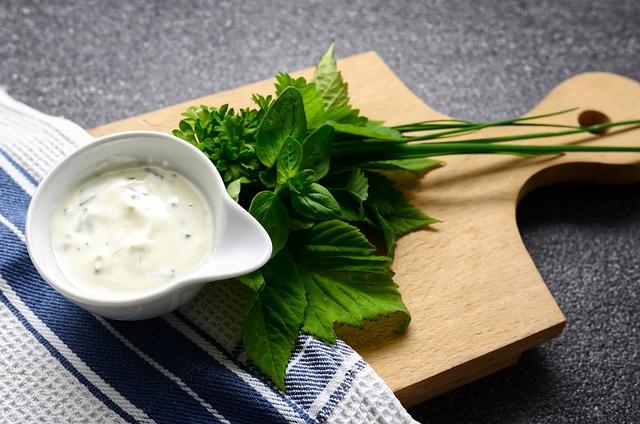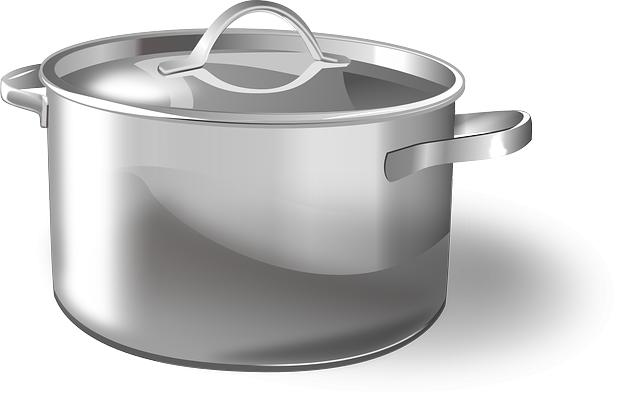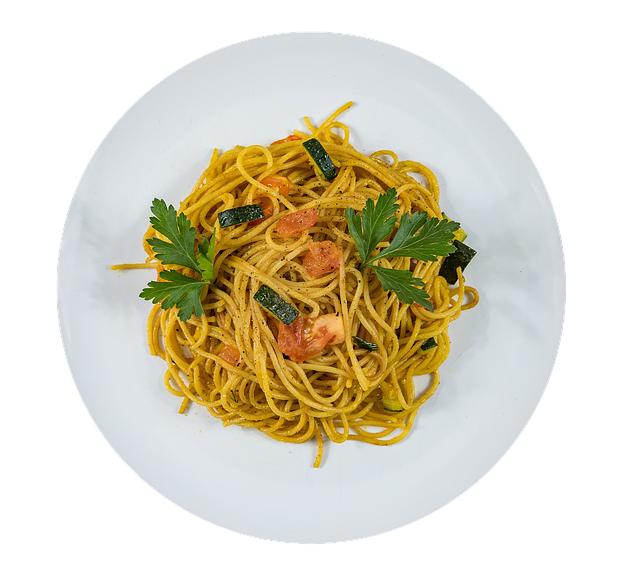Sauce vs. Condiment: Understanding the Delicious Differences
When it comes to adding flavor to your favorite dishes, the terms “sauce” and “condiment” are often used interchangeably. But, did you know that there are actually key differences between the two? In this article, we’ll explore the delicious distinctions between sauces and condiments, helping you to elevate your culinary creations with confidence and clarity. So, grab a seat and get ready to delve into the world of flavor-filled delights!
Contents
- Diving into the World of Sauces and Condiments
- Key Differences Between Sauces and Condiments
- Understanding the Role of Sauces in Enhancing Flavor
- Exploring the Versatility of Condiments in Culinary Creations
- How to Choose the Right Sauce or Condiment for Your Dish
- Tips for Incorporating Sauces and Condiments Into Your Cooking
- The Art of Balancing Flavors with Sauces and Condiments
- Elevating Your Dishes with Homemade Sauces and Condiments
- Concluding Remarks
Diving into the World of Sauces and Condiments
When it comes to enhancing the flavor of our favorite dishes, sauces and condiments play a vital role. While these two terms are often used interchangeably, they actually have subtle differences that set them apart. Let’s dive into the world of sauces and condiments to understand these delicious distinctions.
Sauces:
- Sauces are typically liquid or semi-liquid accompaniments that add flavor, moisture, and visual appeal to a dish.
- They are often cooked or prepared using a combination of ingredients such as herbs, spices, stocks, and liquids.
- Sauces can be served hot or cold and are commonly used to coat, dip, or drizzle over food to enhance its taste.
Condiments:
- Condiments are a category of sauces that are used to enhance the flavor of food but are usually served on the side.
- They can be in the form of spreads, dips, relishes, or pickles and are added to a dish according to individual taste preferences.
- Condiments are often a combination of flavors, textures, and aromas that complement the main ingredients of a dish.

Key Differences Between Sauces and Condiments
When it comes to enhancing the flavor of our favorite dishes, sauces and condiments play a crucial role. While both can add that extra touch to a meal, there are key differences between the two that every food lover should know.
One of the main distinctions between sauces and condiments is their consistency. **Sauces** are typically liquid or semi-liquid in form, while **condiments** are usually thicker and can be spread onto food. This means that sauces are often poured over dishes, such as pasta or stir-fry, while condiments are used as dips or spreads on sandwiches or burgers.
Another important difference is the way they are used in cooking. **Sauces** are often incorporated into recipes during the cooking process to infuse flavors into the dish, while **condiments** are typically added to a meal after it has been prepared to provide additional taste and texture. So next time you’re in the kitchen, consider whether you need a sauce to cook with or a condiment to complement your meal!

Understanding the Role of Sauces in Enhancing Flavor
When it comes to enhancing the flavor of a dish, sauces and condiments play a significant role. While they both add taste and depth to a meal, there are some key differences between the two.
Sauce:
- Typically thicker in consistency
- Used to complement or enhance the flavors of a dish
- Made from a combination of ingredients such as herbs, spices, and liquids
Condiment:
- Often more liquid or spreadable
- Used to add a burst of flavor to a dish
- Can be a single ingredient (like mustard or ketchup) or a combination of flavors
| Type | Consistency | Usage |
|---|---|---|
| Sauce | Thicker | Complements or enhances flavors |
| Condiment | Liquid or spreadable | Adds burst of flavor |

Exploring the Versatility of Condiments in Culinary Creations
When it comes to enhancing the flavor of our favorite dishes, sauces and condiments play a crucial role. While both are used to add taste and depth to a meal, there are some key differences between the two that are worth exploring. Understanding the distinctions can help elevate your culinary creations to new levels of deliciousness.
One of the main differences between sauces and condiments lies in their consistency. Sauces are typically liquid or semi-liquid accompaniments that are cooked or prepared separately and added to a dish, either during the cooking process or right before serving. On the other hand, condiments are usually thicker or chunkier in texture and are served alongside the main dish to be added as desired by the diner.
While sauces are often integral to a recipe and can make or break a dish, condiments offer a customizable element that allows individuals to tailor the flavor of their meal to their liking. Whether you prefer a spicy kick from hot sauce, a tangy sweetness from ketchup, or a creamy richness from aioli, condiments bring a world of possibilities to the table.

How to Choose the Right Sauce or Condiment for Your Dish
Choosing the right sauce or condiment to accompany your dish can truly elevate the dining experience. While many people use the terms interchangeably, there are actually some key differences between the two. Let’s break it down:
- Sauce: A sauce is typically a liquid or semi-liquid mixture that is used to flavor, moisten, or enhance a dish. Sauces are often cooked and can be hot or cold. They are usually incorporated into the recipe during the cooking process.
- Condiment: A condiment, on the other hand, is a substance that is added to food to impart a particular flavor or to complement the dish. Condiments are usually served on the side and added to the dish according to personal preference.
When choosing the right sauce or condiment for your dish, consider the flavors of the main ingredients and how the addition of a sauce or condiment can enhance or balance those flavors. Experiment with different options to find the perfect accompaniment for your meal.

Tips for Incorporating Sauces and Condiments Into Your Cooking
When it comes to elevating the flavors of your dishes, sauces and condiments play a crucial role. While both of these culinary elements add a pop of taste to your meals, there are some key differences between the two that are worth noting.
Sauces are typically thick and rich in flavor, often used to enhance the main components of a dish or to bring everything together. They can be cooked or uncooked, hot or cold, and can range from creamy to tangy to spicy. Some common types of sauces include tomato sauce, bechamel, hollandaise, and pesto.
Condiments, on the other hand, are usually served on the side or as a topping for dishes to provide an extra burst of flavor. They are meant to complement the flavors of the main ingredients rather than overpower them. Examples of condiments include ketchup, mustard, mayonnaise, salsa, and soy sauce.
Remember, whether you’re making a sauce from scratch or adding a dollop of your favorite condiment, these flavorful additions can take your cooking to the next level. So next time you’re in the kitchen, don’t be afraid to get creative with incorporating sauces and condiments into your dishes!
The Art of Balancing Flavors with Sauces and Condiments
When it comes to elevating the flavors of a dish, sauces and condiments play a crucial role. While they both add a burst of flavor to a meal, there are subtle differences between the two that can greatly impact the overall taste experience. Understanding these differences can help you master the art of balancing flavors in your cooking.
First, let’s clarify the distinction between sauces and condiments. Sauces are typically thicker in consistency and are used to coat, flavor, or enhance the main components of a dish. They are often cooked and can be served hot or cold. On the other hand, condiments are usually more liquid in texture and are added to a dish just before or during consumption to provide additional flavor. These can include items like ketchup, mustard, salsa, and soy sauce.
When pairing sauces and condiments with your dishes, it’s important to consider the flavor profile of each component. Here are some tips to help you achieve a well-balanced flavor profile:
- Start with a base sauce that complements the main ingredients
- Add condiments sparingly to enhance the overall taste without overpowering
- Experiment with different combinations to find the perfect balance of flavors

Elevating Your Dishes with Homemade Sauces and Condiments
When it comes to enhancing the flavor of your dishes, homemade sauces and condiments can take your cooking to the next level. But what exactly is the difference between a sauce and a condiment? Let’s break it down:
Sauce:
- Made with a combination of ingredients such as herbs, spices, and liquids like broth or wine
- Usually cooked or simmered to meld flavors together
- Can be used to coat or accompany dishes like pasta, meat, or vegetables
Condiment:
- Usually made with fewer ingredients than a sauce, using items like vinegar, sugar, and seasonings
- Typically not cooked, but rather mixed together and stored for later use
- Often used as a finishing touch or garnish to add a burst of flavor to a dish
Concluding Remarks
Next time you’re reaching for that bottle of ketchup or jar of mustard, remember the key differences between sauces and condiments. While both can add flavor to your dishes, sauces are more complex and can be used as a base for cooking, while condiments are typically used as a finishing touch. Understanding these distinctions can help you elevate your culinary skills and create delicious meals that truly impress. So go ahead, experiment with different sauces and condiments in your kitchen and enjoy the tasty results! Happy cooking!







